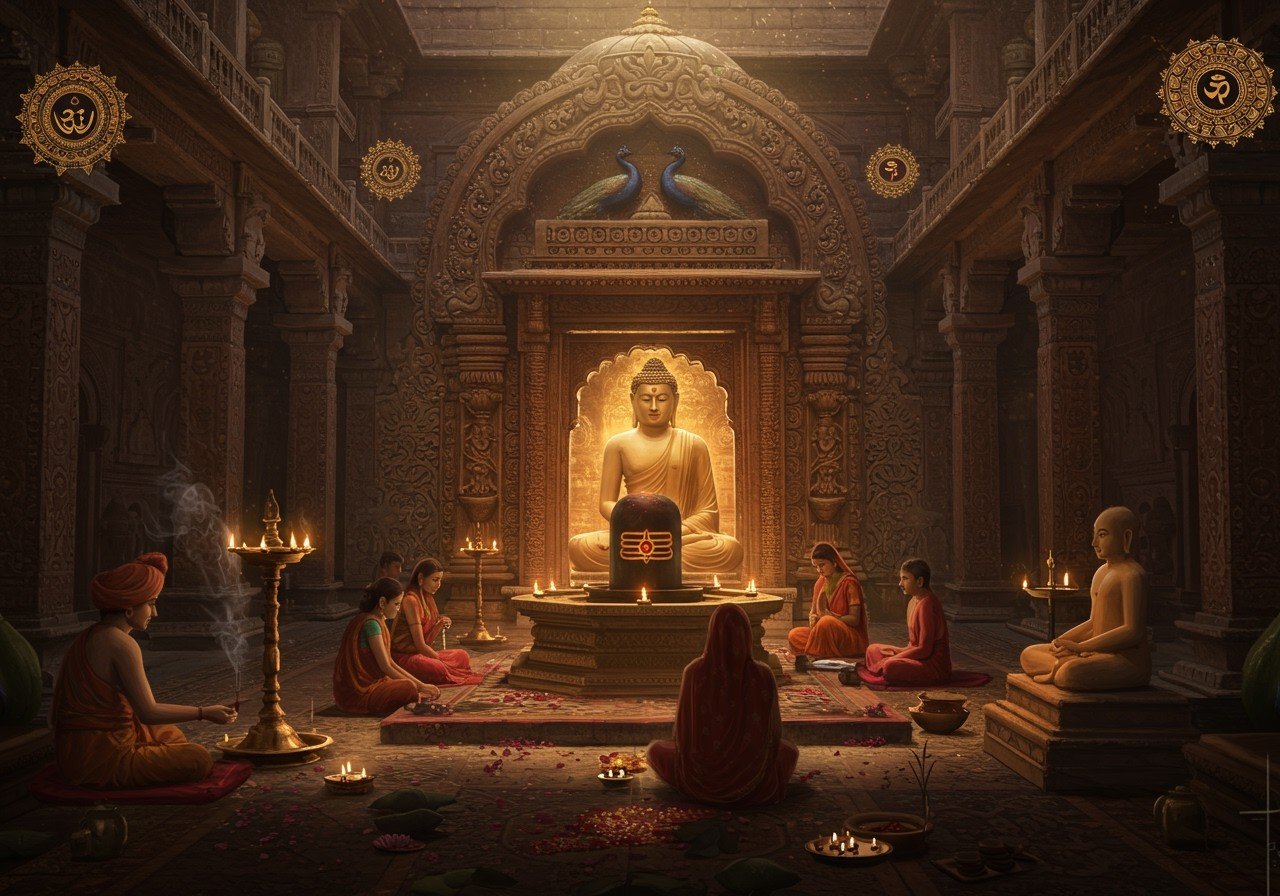
The Pratihara Dynasty, also known as the Gurjara-Pratiharas, was a prominent power in Northern India from the 8th to the 11th centuries. Their reign significantly influenced Indian culture, art, and religion. This article explores the religious landscape of the Pratihara Dynasty, including their caste affiliations, religious patronage, principal deities, and contributions to temple architecture.
Historical Overview
Emerging from present-day Rajasthan and Gujarat, the Pratiharas played a vital role in defending India against Arab incursions, thereby safeguarding Indian culture and religion. Key rulers like Nagabhata I, Mihira Bhoja, and Mahendrapala I shaped the dynasty’s religious and cultural trajectory.
Religious Practices of the Pratihara Dynasty
The Pratiharas predominantly practiced Hinduism, demonstrating ardent patronage of Hindu temples and Vedic rituals. Their support for Brahmanism and the resurgence of Sanskrit literature is well documented. Key deities included Vishnu, Shiva, and Surya (the Sun God). The dynasty’s involvement in constructing magnificent temples, such as those at Khajuraho and Osian, is noteworthy.
Read more about Lord Vishnu
Read more about Lord Shiva
Religious Tolerance and Syncretism
The Gurjara-Pratihara branch also extended their support to Jainism alongside Hinduism, showcasing a syncretic approach to religion. Jain temples in Khandela and Osian flourished under their patronage. Jain scholars and monks occupied important positions in the court, reflecting the dynasty’s religious tolerance and diversity.
Caste and Social Structure
Pratihara rulers belonged to the Kshatriya (warrior) caste. This identity influenced their role as protectors of the Hindu faith and patrons of Brahmanism. The social hierarchy under the Pratiharas emphasized the Brahmanical order, with significant support given to Brahmin priests. The ruling class upheld dharma (righteousness) and maintained social order through religious practices.
Architectural Contributions to Temples
The Pratiharas made substantial contributions to Indian temple architecture. Temples constructed during their rule featured elaborate carvings, intricate sculptures, and the Nagara style of architecture. Notable examples include the Kandariya Mahadeva Temple in Khajuraho and the Sun Temple in Osian. Their promotion of art and architecture as expressions of religious devotion is significant.
Explore More About Temple Architecture
Cultural and Religious Legacy
The Pratihara Dynasty’s patronage of Hinduism and Jainism influenced subsequent dynasties. The preservation of Vedic rituals and Sanskrit literature formed a vital part of their cultural legacy. The temples built by the Pratiharas remain important pilgrimage sites and cultural heritage monuments today.
Poojn.in: Supporting Your Spiritual Journey
Poojn.in, India’s leading online store for cultural and religious goods, offers a wide selection of products to support your spiritual practices, connecting you with the rich traditions of the Pratihara Dynasty. Explore our collection of meticulously crafted idols, puja items, and more to enhance your devotion and reverence.
Find exquisite Deities for your home shrine at Poojn.in
Frequently Asked Questions
What was the primary religion of the Pratihara Dynasty?
Hinduism was the primary religion, with a focus on Vishnu and Shiva worship, reflecting the dynasty’s deep-rooted connection to Vedic traditions.
Did the Pratihara Dynasty practice other religions?
While Hinduism was dominant, the Pratiharas also demonstrated tolerance towards Buddhism and Jainism, fostering a diverse religious landscape.
What were some key religious practices?
Key practices included temple worship, Vedic rituals, offerings to deities, and the observance of Hindu festivals, reflecting a vibrant spiritual life.
Who were the main deities worshipped?
Vishnu and Shiva were the principal deities, with numerous temples dedicated to them, showcasing the dynasty’s devotion to these powerful gods.
What were their contributions to temple architecture?
The Pratiharas significantly influenced temple architecture, introducing the Nagara style and incorporating elaborate carvings and sculptures, leaving behind a legacy of magnificent temples like the Kandariya Mahadeva Temple.
Dive deeper into the world of Hindu rituals and traditions on the Poojn.in blog.


